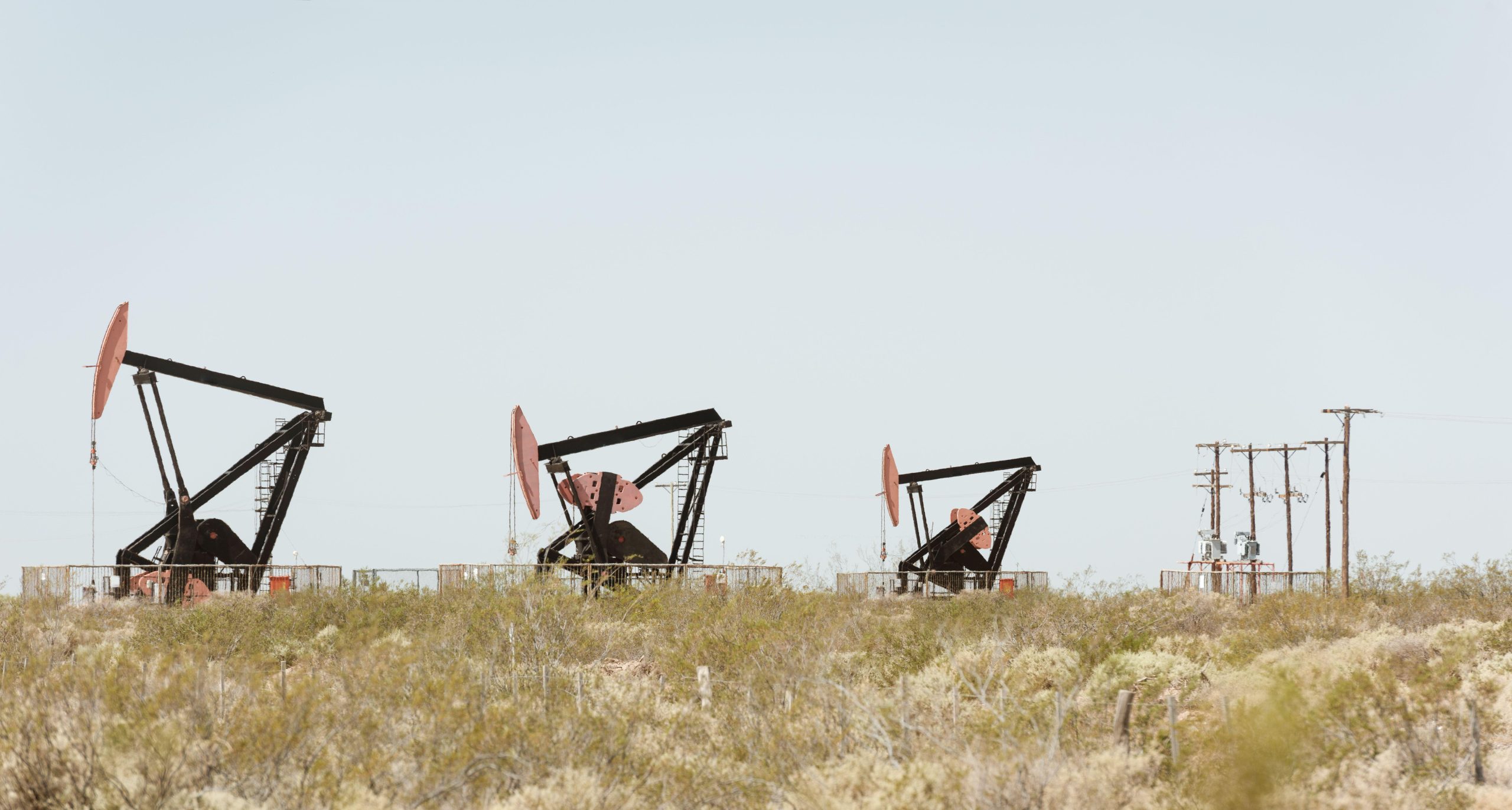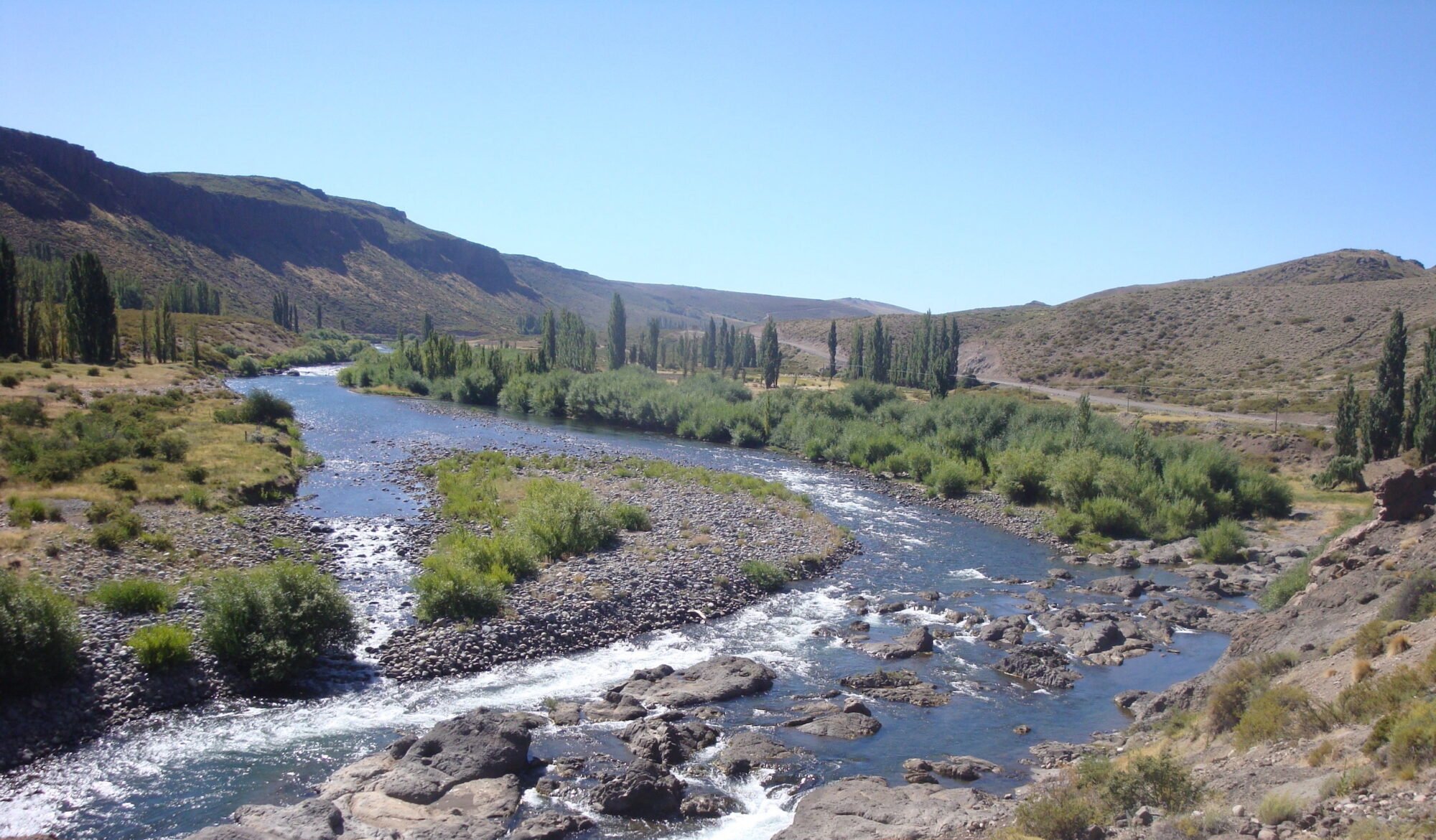“Can we talk about clean energies if we don’t analyse consumption?” said Pablo Troncoso, a member of the Huinganco Environmental Assembly, in the Argentine province of Neuquén. “We have to start working on how we use energy. I don’t see too many campaigns for responsible consumption or self-generation. So, I ask myself, what do we want energy for – only to consume more?”
In 2017, the Neuquén provincial government signed an agreement to build Nahueve, a small hydropower plant located on the river of the same name that is due to open later this year. The dam will have an installed capacity of 4 megawatts (MW) and has been financed primarily by the Abu Dhabi Fund for Devleopment (ADFD) of the United Arab Emirates and, to a lesser extent, by the provincial government.
When it was announced by local authorities, the dam came with promises of bringing multiple benefits for the nearby population, including improved electricity service and drinking water supply, the creation of 200 jobs and water for irrigation of more than 120 hectares of farmland. All of the energy generated by the dam will contribute to the national electricity grid.

Neuquén has a notable track record in the production of clean energy, with 15 projects based on renewable sources across the province, with a combined capacity of approximately 850 MW.
In the north of the province, where the Nahueve dam is located, the El Alamito solar power park is also currently under development, while work is underway on the Domuyo geothermal power pilot project. The provincial authorities say these initiatives are being carried out here as this corner of Neuquén, unlike much of the rest of the province, is not home to gas or oil reserves, but instead has considerable resources to produce clean energy.
Land of fossil fuels
The intention to build a new dam, and a small one at that, may seem of little importance. But it is an interesting development for Neuquén, a province whose main source of income is the extraction of oil and gas. The province’s first oil well was discovered in 1918, and the exploitation of crude oil has been its primary economic activity ever since. In recent years, the region has seen an expansion at Vaca Muerta, the most important unconventional hydrocarbon formation in the country and the second largest shale gas reserve in the world.
Neuquén produces 57,000 barrels of oil per day and half of all the gas consumed in Argentina. The scale of Vaca Muerta is so significant that the further development of even a small part of this formation could cover the country’s energy deficit, the state oil company YPF claims.

Authorities have, however, begun to publicly acknowledge climate change and the need for projects that enable a transition towards a low-carbon future. In this regard, José Brillo, president of the Neuquén Development and Investment Agency (ADI-NQN), a state agency in charge of planning and seeking finance for innovative projects, said that they have the challenge of developing a “counterpart” to the oil and gas fields.
An informed transition?
Although there is no single definition of energy transition, it is broadly understood as the change from an energy mix dependent on fossil fuels to one based on renewable energies. The challenge for governments is to understand and consolidate a “just transition” that goes beyond merely substituting sources and technologies.
For the International Labour Organisation, a just transition means “maximising the social and economic opportunities of climate action, while minimising and carefully managing any challenges – including through effective social dialogue among all groups impacted, and respect for fundamental labour principles and rights.”
In Latin America, many advocate the incorporation of other elements such as environmental justice.
Such social dialogue, or more the lack of it, is something that inhabitants of the northern part of Neuquén have described in relation to the Nahueve dam. There are reports that the project has caused divisions in the area, both over the promises of benefits to the local population, and the lack of information on the dam and its environmental impacts.

“We found out by word of mouth, there was very little information about the project,” explained Pablo, who attended the public consultation meetings, which consisted of technical presentations. “From the beginning, officials talked about all the positive things the project would bring. But this was not reflected in these consultations. They came to explain that there was a plan for 13 energy generation projects, and nothing more.”
Inhabitants described being left with more doubts than certainties. Pablo said: “We were told that one of the main benefits was the irrigation of 50 hectares that would be put into production. But in this area there are already a lot of springs, so we argued that this objective was unnecessary. Furthermore, the province has been in a water emergency for years, so we began to doubt their intentions, and when we asked for more explanations, they came with technical information that is very difficult to understand.”
The mechanism for public consultation hearings is established in Argentina’s General Environmental Law (no. 25,675) and requires public participation to occur in the decision-making process for projects with environmental implications. Under this mechanism, the responsible authority must provide an institutional space for anyone who may be affected or have a particular or general interest to express their opinion.
Gisela Moreira, a lawyer for the Assembly for Water in Northern Neuquén, claimed that the consultation in the Nahueve case did not take place in a legal and informed manner. “The government should have helped the population to understand the facts, to know about the project, its benefits and its costs. This way they can analyse and give their approval or not. This did not happen,” she said.
A just transition should have democratic consultation mechanisms that go far beyond an administrative procedure
Brillo, the president of the state investment agency, has a completely different view of the consultations. “We notified the villagers through FM radios, and it was very public. Rural people came to listen to the technical information,” he said, and insisted that as much information as possible was disseminated.
For Hernán Scandizzo of OPSur, an Argentine energy policy and advocacy organisation, the issue of public consultation is not a trivial one, but a central element of just energy transitions. “A transition should have democratic consultation mechanisms that go far beyond an administrative procedure,” he said. “Instead, governments seek to comply only with international regulations in order to be able to receive external financing.”
Legal interventions
When the dam was approved, it is alleged that several local families faced intimidation to vacate their land for the project’s construction. Some agreed, others did not. Moreira said that the judicial road they had to travel was long, and included violent repression that ended with activists being charged.
In the first instance, Moreira and the Assembly for Water presented an appeal for environmental protection, claiming that the Nahueve dam will cause damage to the local environment and ecology, increase traffic, and damage the quality of life of the people who live in the area. However, the courts did not uphold the legal action.
The assembly also questioned the environmental impact report presented by the government. Moreira claimed that the study that was carried out did not provide sufficient detail or context, as it only analysed some basins and did not give a complete picture of how the area’s rivers will be affected.
With the dam almost finished, locals say the case over the right to their land has not been settled. One family is still demanding access to their land, located next to the watercourse through which the project passes.

“The benefits that were discussed so much are not being seen: the promised workforce has not been generated, the drinking water supply has not improved, nothing has improved, and there has never been any dialogue with the affected families,” said Moreira.
A just transition?
Projects in the province are described as having been carried out with little information, with excessive promises, causing divisions, and, above all, with a lack of awareness on renewable energy.
OPSur argues that this is happening because society has different priorities, and energy diversification is not seen as one of them. For this reason, the organisation believes that it is necessary to build the demand for an energy transition.
“The challenge is to change the idea that energy is a topic that is off-limits to the general population, and that only those who have some technical knowledge on the subject can know about it,” said OPSur’s Scandizzo. “Energy is a right and must be understood as such.”
The case of the Nahueve dam has pulled into focus once more the need to assess how renewable energy projects are conceived, what place is given to care for the environment, and how the participation of the people who live in the area is encouraged.
“We are encouraged to live like those in the big cities, but we live in the mountains,” said Pablo Troncoso. “We have water for our vegetable gardens, but they put a dam on us.
“The way we live as inhabitants of this planet is very extreme – we are consuming to the extreme. At some point governments, decision-makers and people in general will have to balance the scales.”
This story was first published by Climate Tracker Latin America, and is reproduced here with permission.
